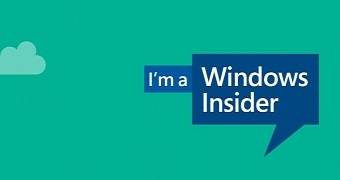The Windows Insider program was launched with much fanfare in October 2014 in order to allow users to try out Windows 10 builds ahead of the official launch of the operating system.
The Insider program evolved at a surprising pace since then, so earlier this year, Microsoft confirmed that more than 16 million users were running preview builds of Windows 10.
Needless to say, this can only be good news for Microsoft itself, as more users means more feedback, which in turn reduces the likelihood of critical bugs in the operating system escaping unfixed when a feature update gets the go-ahead for production devices.
The Windows Insider program currently comprises four different rings that users can enroll in to receive preview builds, as it follows:
| Skip Ahead |
| Fast ring |
| Slow ring |
| Release Preview ring |
In its turn, the Fast ring gets access to the next Windows 10 preview build and receives updates at a faster pace than the Slow ring. Builds included here could also come with bugs and other issues.
On the other hand, the Slow ring is the one recommended for those who wanted to test Windows 10 feature updates without having to deal with reliability issues. Windows 10 builds are released here when Microsoft already resolves most of the glitches discovered by insiders in the Fast ring, and they typically come with dedicated ISO images allowing for clean installs.
The Release Preview ring is only updated when a feature update is close to getting the go-ahead for production devices, so the builds pushed to users here land at the slowest pace.
While all of the above make sense for insiders, Microsoft has changed the purpose of each ring, so at this point, the Windows Insider program is being used for three different Windows 10 versions, as it follows:
| Skip Ahead/Fast ring (already merged) – Windows 10 20H1 (spring of 2020 update) |
| Slow ring – Windows 10 19H2 (fall of 2019 update) |
| Release Preview ring – Windows 10 version 1903 (May 2019 Update) |
The Fast ring currently receives builds that allow users to test the feature update due in the spring of 2020. This particular release is likely to include substantial changes and new features, and this is the reason Microsoft kicked off the testing so early.
The Slow ring is being used for testing the very next Windows 10 feature update. Codenamed 19H2, this is expected to be more of a service pack, so its focus would be mostly on fixing issues and improving the general performance of the OS.
And last, the Release Preview ring stays on the latest stable build of Windows 10, namely the May 2019 Update, and is used by Microsoft to test cumulative updates before they receive the green light for all Windows 10 devices. In other words, users in this ring can help Microsoft test quality updates in anticipation of the public debut each month.
Users can always switch from one ring to another from the settings page in Windows 10 at the following location:
Windows 10 > Settings > Update & Security > Windows Insider Program

 14 DAY TRIAL //
14 DAY TRIAL //